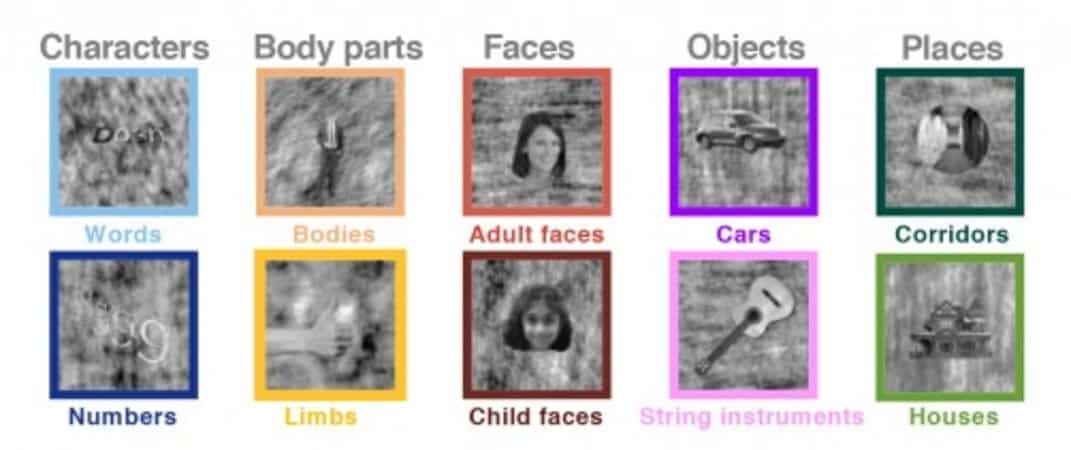Summary: A new study sheds light on visual development and learning in children. Researchers found cortical recycling in the ventral temporal cortex reflects adjustments to changing visual demands throughout childhood.
Source: NIH
Scientists studied the brain activity of school-aged children during development and found that regions that activated upon seeing limbs (hands, legs, etc.) subsequently activated upon seeing faces or words when the children grew older. The research, by scientists at Stanford University, Palo Alto, California, reveals new insights about vision development in the brain and could help inform prevention and treatment strategies for learning disorders.
The study was funded by the National Eye Institute and is published in Nature Human Behaviour.
“Our study addresses how experiences, such as learning to read, shape the developing brain,” said Kalanit Grill-Spector, Ph.D., a professor at Stanford University’s Wu Tsai Neurosciences Institute. “Further, it sheds light on the initial functional role of brain regions that later in development process written words, before they support this important skill of reading.”
Grill-Spector’s team used functional MRI to study areas in the ventral temporal cortex (VTC) that are stimulated by the recognition of images. About 30 children, ages 5 to 12 at their first MRI, participated in the study. While in the MRI scanner, the children viewed images from 10 different categories, including words, body parts, faces, objects, and places. The researchers mapped areas of VTC that exhibited stimulation and measured how they changed in intensity and volume on the children’s subsequent MRI tests over the next one to five years.
Results showed that VTC regions corresponding to face and word recognition increased with age. Compared to the 5-9-year-olds, teenagers had twice the volume of the word-selective region in VTC. Notably, as word-selective VTC volume doubled, limb-selective volume in the same region halved. According to the investigators, the decrease in limb-selectivity is directly linked to the increase in word- and face-selectivity, providing the first evidence for cortical recycling during childhood development.

“The loss of limb-selective volume surprised us,” said first author Marisa Nordt, Ph.D., a postdoctoral fellow in Grill-Spector’s lab. “This challenges a theory of cortical development, which states that new representations, like emerging regions involved in word recognition, are sculpted on previously uncommitted cortex. Our study suggests that during childhood, cortical selectivity can change from one category to another.”
The study authors suggest that cortical recycling in VTC likely reflects adjustments to changing visual demands during childhood. For example, infants tend to look at faces. As they grow into toddlers and learn language, they are exploring objects and deciphering gestures. Word recognition becomes increasingly important as children learn to read.
In future studies, Grill-Spector and colleagues will explore whether decreases in limb-selective VTC volume have behavioral implications, asking if deviations from observed trends have bearing on development disorders.
Funding: This research was supported by the National Eye Institute (EY022318, EY020485, and F31EY027201) with additional funding from the National Science Foundation (DGE-114747) and the German National Academic Foundation (NO 1448/1-1).
About this neurodevelopment research news
Source: NIH
Contact: Press Office – NIH
Image: The image is credited to Kalanit Grill-Spector and Marisa Nordt
Original Research: Closed access.
“Cortical recycling in high-level visual cortex during childhood development” by Marisa Nordt, Jesse Gomez, Vaidehi S. Natu, Alex A. Rezai, Dawn Finzi, Holly Kular & Kalanit Grill-Spector. Nature Human Behavior
Abstract
Cortical recycling in high-level visual cortex during childhood development
Human ventral temporal cortex contains category-selective regions that respond preferentially to ecologically relevant categories such as faces, bodies, places and words and that are causally involved in the perception of these categories. How do these regions develop during childhood?
We used functional magnetic resonance imaging to measure longitudinal development of category selectivity in school-age children over 1 to 5 years. We discovered that, from young childhood to the teens, face- and word-selective regions in ventral temporal cortex expand and become more category selective, but limb-selective regions shrink and lose their preference for limbs.
Critically, as a child develops, increases in face and word selectivity are directly linked to decreases in limb selectivity, revealing that during childhood, limb selectivity in ventral temporal cortex is repurposed into word and face selectivity. These data provide evidence for cortical recycling during childhood development.
This has important implications for understanding typical as well as atypical brain development and necessitates a rethinking of how cortical function develops during childhood.






